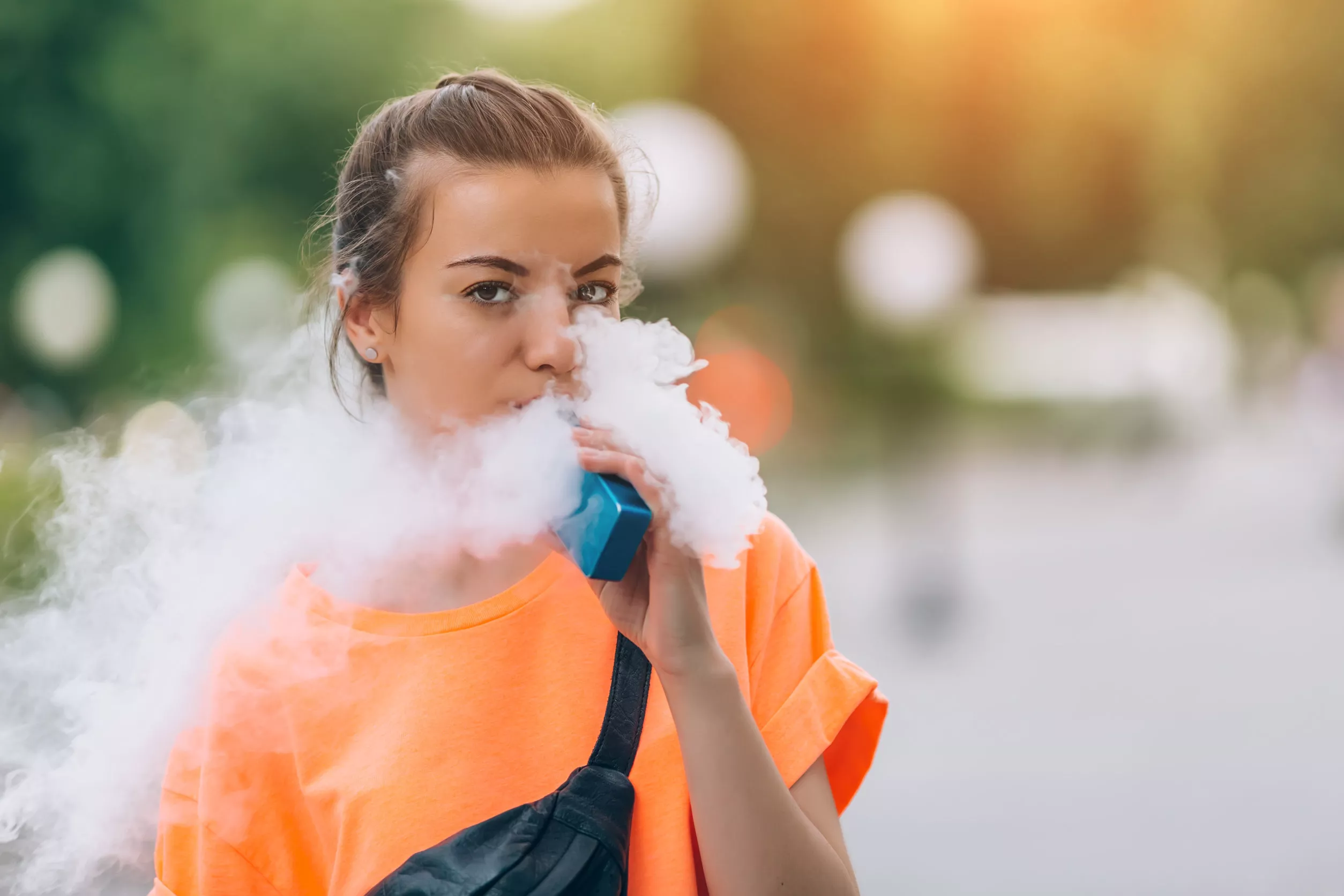Vaping Facts: Everything You Need to Know

What is Vaping?
“Vaping,” or an electronic cigarette, is a device used to inhale a vapor fluid for nicotine, or other THC products, which are used within this device. While vaping companies insist it is a healthier alternative to smoking cigarettes, other health risks are involved. Overall, vaping is just as addictive as smoking regular cigarettes due to the highly addictive substances within the product and accessibility of vaping products.
Even if someone attempts to quit smoking by switching to vaping, there is no medical consensus on whether that works. Despite the perception that e-cigs help people quit smoking, the fact is that many kids pick up a vaping habit before ever touching a cigarette. If your teenager is struggling with a vape addiction or cannot quit vaping without assistance, they may require a teen residential program to help them stop.
Is Vaping a Gateway drug?
A gateway drug is a habit-forming drug that entices someone to use other more addictive drugs or alcohol. The majority of teens don’t start using hard drugs such as heroin or meth; teens begin with gateway drugs like nicotine or marijuana when they begin experimenting. Teens often presume to vape as “cool” or “harmless,” thus start trying it. This can be dangerous due to lacking the knowledge about how much nicotine or marijuana is within the vape juice.
Further, medical research found that vaping does, indeed, serve as a gateway drug. A study published in the New England Journal of Medicine showed that nicotine, including the nicotine found in tobacco vape products, primes the brain’s dopaminergic neurons for cocaine addiction. Considering the fact that nicotine, the addictive chemical in vaping, acts on the brain’s memory and reward pathways, it is no wonder why the use of vaping has skyrocketed among teens. There is also research that shows vaping increases your teen’s risk of drinking underage and smoking marijuana.
Facts About Teen Vaping

- E-cigs deliver nicotine, or THC, which increases heart rate, blood pressure and releases rewarding dopamine to the brain, which causes them to become addictive.
- Companies are targeting teens with candy-like packaging and sweet flavors. They have tastes like “Candy King Patch,” “V’Nilla cookies and milk,” or even “DrippN Whip Cream.” Moreover, the packaging resembles that of candy wrappers that will be familiar for students. Vaping companies have also begun scholarship opportunities for students who will write essays on how vaping is safe.
- Aerosol and other risks may be an added factor. Aerosol is very harmful, and other chemicals are used to make these flavors. Aerosol is a chemical under pressure that releases a fine spray by propelling gas. In addition to these concerns, many vape shops still mix their flavors; this cannot guarantee that the flavors are safe or pure.
- 7 out of every 10 teenagers have used a vape before. This has nearly doubled among high school seniors.
- There is no evidence to show vaping reduces smoking cigarettes or other drug use. One study showed that teens who smoke were 25 percent more likely to smoke marijuana.
- Vaping devices are easily hidden from parents, more so than cigarettes. The scent the vapes give off is not as alarming as traditional cigarette smoke. Unlike conventional cigarettes, e-cigarettes are nearly scentless and resemble thumb drives or pens, making them easier to hide.
Health Effects of Vaping
How dangerous is vaping? Vaping is particularly unsafe for teens, with serious potential health risks. Although e-cigs do not contain tar, they are far from safe. Aside from the 2019 outbreak of lung disease and deaths caused by vaping, the impacts of vaping on the body are severe; the long-term side effects of vaping can lead to:
- Lung cancer
- Heart issues
- Brain damage
- Mouth and gum disease
- Seizures
- Blood pressure issues
Although presumed to be less harmful because of the fact that it’s not cigarette smoke, the so-called “vape clouds” have also been shown to alter pulmonary function, inflammation, the lung’s self-protective measures, and the lung’s tissue and membranes. Vaping increases the risk.
The bottom line is that vaping is not safe for kids, teens, or young adults. Most vaping devices contain nicotine, THC, or other harmful and addictive substances. Vaping also increases the risk of smoking cigarettes or becoming addicted to other drugs in the future.
How to Quit Vaping?
Quitting vaping is no easy task; it will be challenging, but it’s possible with the right mindset and determination. First, make a list of all the reasons to stop. The list can include medical consequences, family members, friends, and negative side effects of vaping like coughing, dry mouth and throat, shortness of breath, and headaches. Next, tell friends and family about the plan to stop smoking! They will be there to offer support throughout the process. Finally, pick a day to quit (allow about a week so in order to mentally prepare for what’s to come and have an action plan available to help).
Support line to help with quitting vaping: Teenagers and young adults can text 88709 with the phrase “DITCHVAPE” to begin receiving support.
If your teenager cannot quit vaping after attempts to stop, or if they experience any side effects, it’s time to take action. Teen residential programs are available to assist in the event trying on their own is not helping. To learn more, contact Safe Landing Recovery at 844-486-7205.

